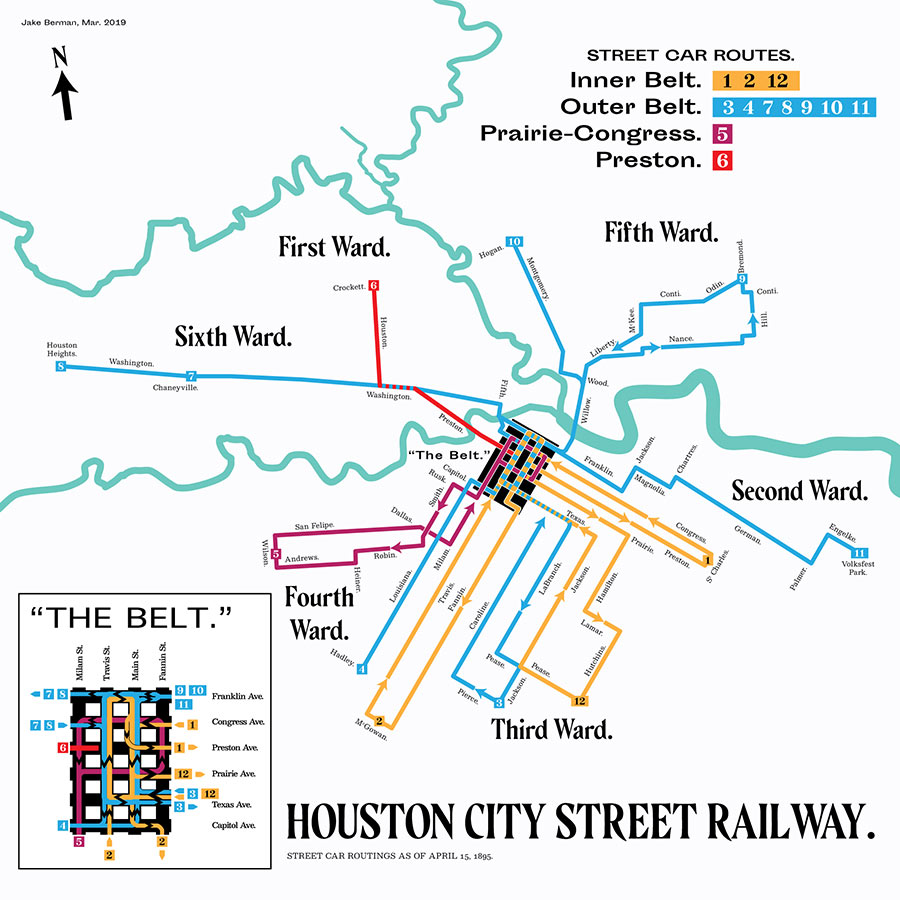COMMENT OF THE DAY: THE GREAT MONTROSE PUBLIC TRANSPORTATION ROUTE THINNING  “The Fairview bus route replaced the streetcar line and operated for decades. Thirty years ago a significant number of people in Montrose relied on public transportation. As demographics changed, METRO decided that ridership didn’t justify some routes through Montrose. In addition to Fairview, they also eliminated the University (Hawthorne) and Alabama (actually W. Alabama) routes. It’s surprising how much of a difference there is between walking one or two blocks vs. five or more to the closest bus stop. I agree that a revived Fairview line would be convenient, and a trolley would be great. The question is, will residents of $500k townhomes willingly commit to giving up their cars? I wish they would, and think they won’t.” [Big Tex, commenting on Houston’s Vanished and Current Middle-of-the-Road Rail Networks, Close Up and Personal] Illustration: Lulu
“The Fairview bus route replaced the streetcar line and operated for decades. Thirty years ago a significant number of people in Montrose relied on public transportation. As demographics changed, METRO decided that ridership didn’t justify some routes through Montrose. In addition to Fairview, they also eliminated the University (Hawthorne) and Alabama (actually W. Alabama) routes. It’s surprising how much of a difference there is between walking one or two blocks vs. five or more to the closest bus stop. I agree that a revived Fairview line would be convenient, and a trolley would be great. The question is, will residents of $500k townhomes willingly commit to giving up their cars? I wish they would, and think they won’t.” [Big Tex, commenting on Houston’s Vanished and Current Middle-of-the-Road Rail Networks, Close Up and Personal] Illustration: Lulu





To be fair though, 30yrs ago Houston’s commercial districts were far less spread out as they are now.
.
Even if you put a metro line right in front’s of someone’s house, it’s not to say it’s going to be of any benefit to them. A lot of these folks reverse commute to the energy corridor, woodlands, westchase and so on. METRO is all but useless for reverse commuting and that is a large number of Montrosians.
.
Most of them are just retired though and would definitely have a fit if you start running buses down streets that are neither safe for pedestrians to begin with, or would be completely destroyed by the wear and tear of Metro buses.
.
Metro was tearing up Vermont like crazy when they were using it during the Shepherd construction. Fairview isn’t much better.
“Will residents of $500k townhomes willingly commit to giving up their cars?”
.
Residents of $1M apartments do all the time. But for people to do so, other options need to be either faster, cheaper, easier or more comfortable than the alternative (private automobile), which is unlikely to be the case until activity density (residents+jobs per sq mile) increase significantly from current levels. (Oh, and we stop subsidizing parking.)